The use of AI in food industry is changing how everyone grows, distributes, and eats food. Machine learning and data analytics are improving farming methods, making supply chains more efficient, and making sure food is safe to eat.
According to a report, the global market for food automation and robotics is expected to grow a lot by 2030, reaching around 5.4 billion dollars. (Source: Statista)
These statistics show how important AI is for the future of the food industry. It will help with new ideas, making things run smoother, and being kinder to the environment.
AI has a big impact on food industry, from predicting to customer support. This blog explores how AI in food industry changing with automation making it more sustainable and keeping up with what customers want in the industry.
Table of Contents
Business Benefits Of AI Automation In The Food Industry
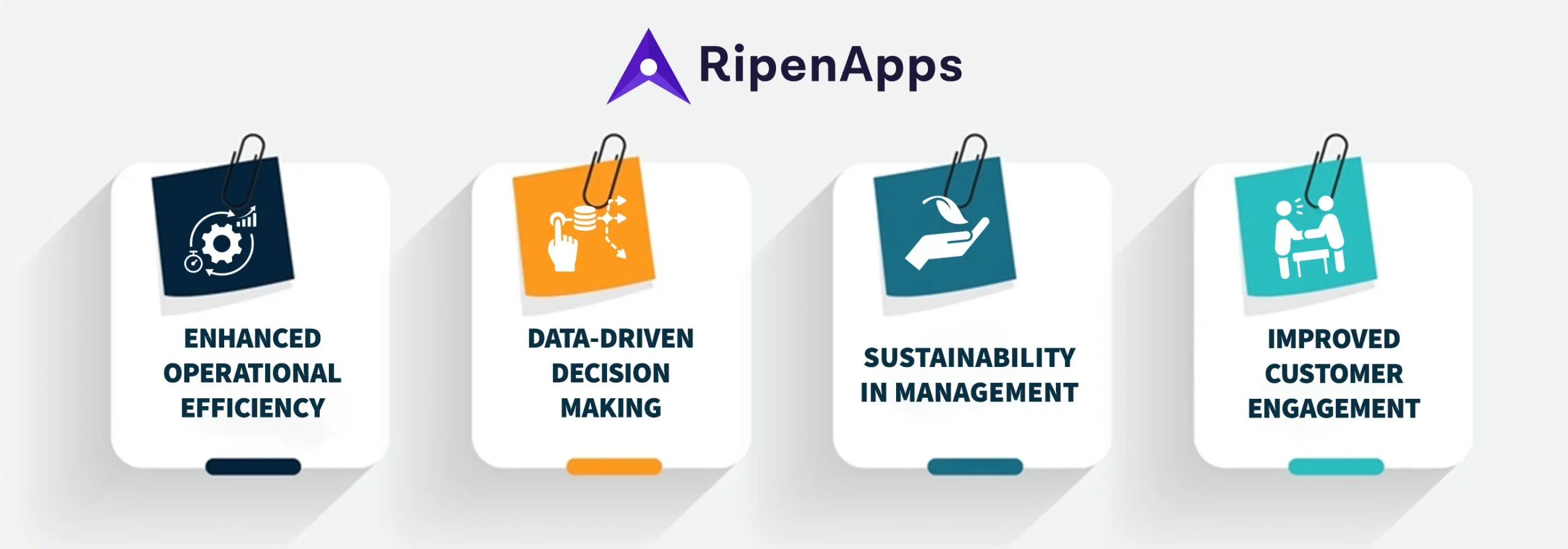
Automating the workspace has always been a great step for any food industry. Because everyone wants to have their coffee with just a click of a button.
There are an immense number of benefits for a business to incorporate AI in the food industry.
1. Enhanced Operational Efficiency
To increase the efficiency at an accelerated production and ensure the consistency and quality of food products. To meet the high demands and standards of the industry and consumers alike.
AI has completely changed how food factories work. Imagine robots using smart technology to do tasks like making food faster and without mistakes. They work non-stop, day and night, making sure everything runs smoothly.
These smart-systems also help find any problems that could affect the quality of food, like mistakes or not keeping it safe. This means food is made faster, with fewer mistakes, and always meets high standards. It’s like having a super-efficient team making sure every snack or meal is perfect.
2. Data-Driven Decision Making
For better data-driven decision-making, an AI-powered food app can be a huge help in it. AI helps in gathering intricate data and summaries them in an easily readable format for businesses. It enables businesses to create future go-to-market strategies to increase their revenue.
Using AI in food industry to make decisions based on data has helped food companies stay ahead in a developing market. It means they can deal with problems before they happen and make their processes work better.
3. Sustainability In Management
AI in food industry plays an important role. Why do you say? Because they help cut down on wasted food by figuring out exactly how much food we need and keeping track of what we have.
Using AI in agriculture and managing how goods move around helps businesses stay successful and helps us take better care of the planet. It makes sure farms and businesses can keep going while also being responsible and looking after the environment.
4. Improved Customer Engagement
AI is making a big difference in how food businesses connect with customers. By looking closely at what customers like and how they behave, AI can suggest things they might really enjoy.
With customer service chatbots, businesses can look at what their customers are asking for. AI will help them to gather similar kinds of feedback and give suggestions to business owners about the betterment of their food and restaurant mobile apps.
Use Cases Of AI In Food Industry
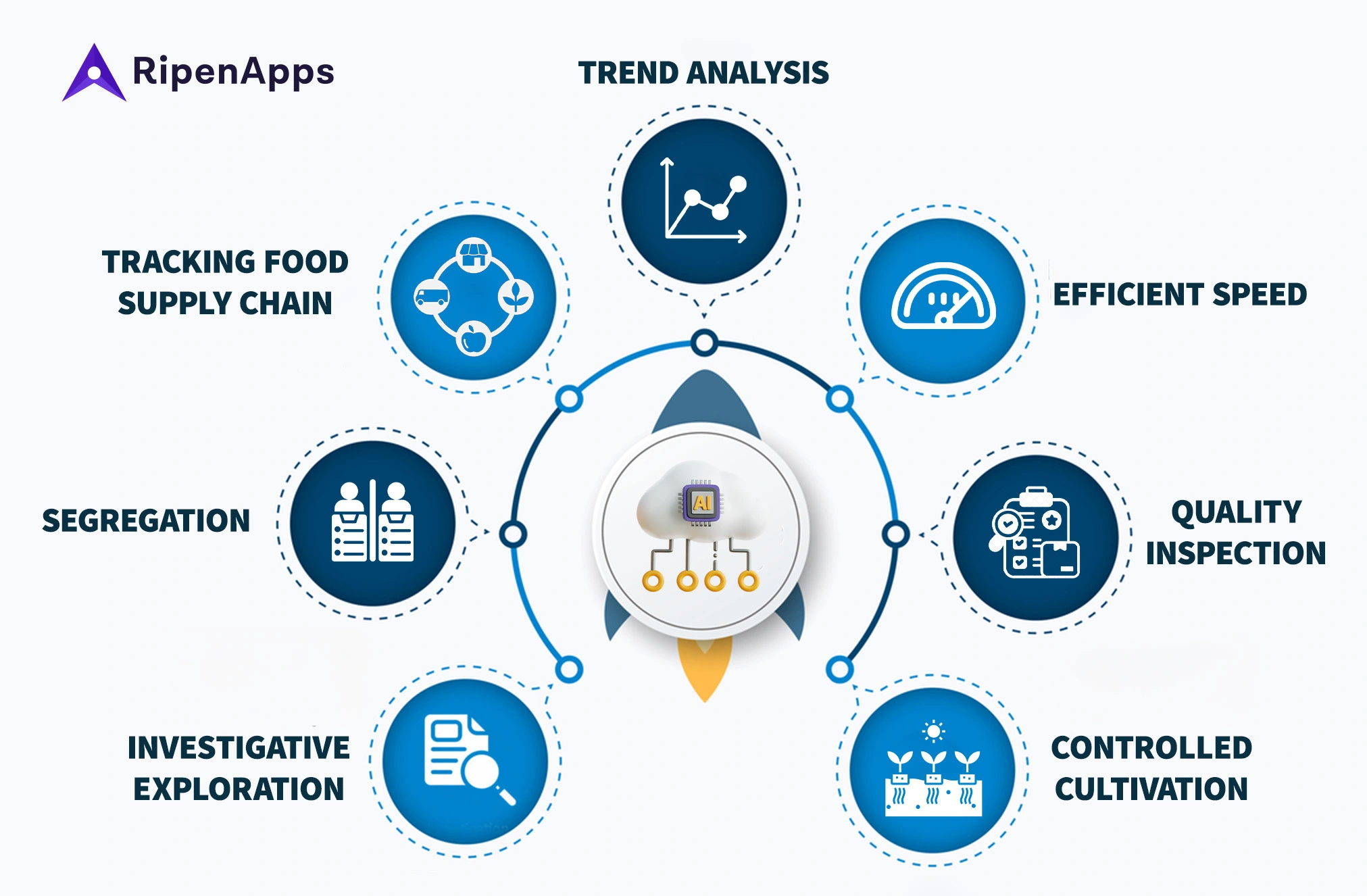
The food industry is evolving to meet the needs of more people and provide better quality, sustainable food in a smarter way. AI in food industry is a big part of this automation.
By using smart technology like Artificial Intelligence and Machine Learning, the food industry can become stronger and more advanced. This means making food more efficient and being able to respond quickly to what people want. Let’s take a look at how this change is shaking up the industry.
Trend Analysis
The way AI in food industry is by helping companies understand what customers want. By analyzing big data and using machine learning, AI can figure out what people are looking for when it comes to food products.
This step is really important because businesses need to pick products that customers will like and buy. AI helps them feel more sure about launching a product with certain features. By looking at trends, food businesses can meet customer needs better and reach the right people in the market.
Efficient Speed
AI in food industry speeds up the production process, which is a major advantage. In the past, humans did everything themselves, which can lead to mistakes and slow production.
But now AI and machines doing the work, and production is much faster and more efficient. This helps businesses make more products and earn more money.
Quality Inspection
Before, humans had to check the quality of food, which was a tiresome job. In the food industry, maintaining high standards is crucial, as per rules. But with large-scale production, it’s easy to miss things. Yet, when AI-powered machines are in charge, quality stays top-notch.
AI tools can be taught to check for different quality measures, ensuring top-notch products. And because machines have set standards, errors are minimal.
Controlled Cultivation
While cultivation isn’t directly part of the food industry, it greatly affects the quality of the final product. Cultivation involves growing crops for later use in production. Sometimes, weather changes or other factors can cause crop failures, leading to poor-quality yields.
However, with controlled cultivation using AI in food industry, this can be managed. AI helps ensure quality by allowing growers to control environmental conditions, preventing crop damage, and ensuring consistent quality.
Investigative Exploration
Mistakes happen in every industry, whether it is food production or making clothes. Sometimes, you won’t be sure why these mistakes occur.
But with AI, food companies can dig into these issues and find out why they happen. By looking at past data and analyzing it, AI can quickly figure out what went wrong. This saves a lot of time and lets companies focus on other tasks without missing anything.
Segregation
A crucial step in food production is sorting out ingredients. This ensures an orderly and smooth production process. In the past, people had to do this job by hand, which took a lot of time. Nowadays, specialized machines with AI algorithms handle the sorting, making it faster and easier. This saves both time and resources for food production companies.
Tracking Food Supply Chain
Have you ever thought about how you can track a package? Even though we’re used to it now, artificial intelligence actually introduced this technology long before we knew about it.
Just like tracking a package, food companies can use AI to track their supply chain. This helps make sure that their ingredients are going to the right places at the right times. Sometimes, ingredients can get lost or sent to the wrong place, which can delay making the final product. With AI tools, food makers can now keep an eye on their supply chain, from packaging materials to ingredients, using special apps and websites.
Trends In Automation And AI In Food Industry
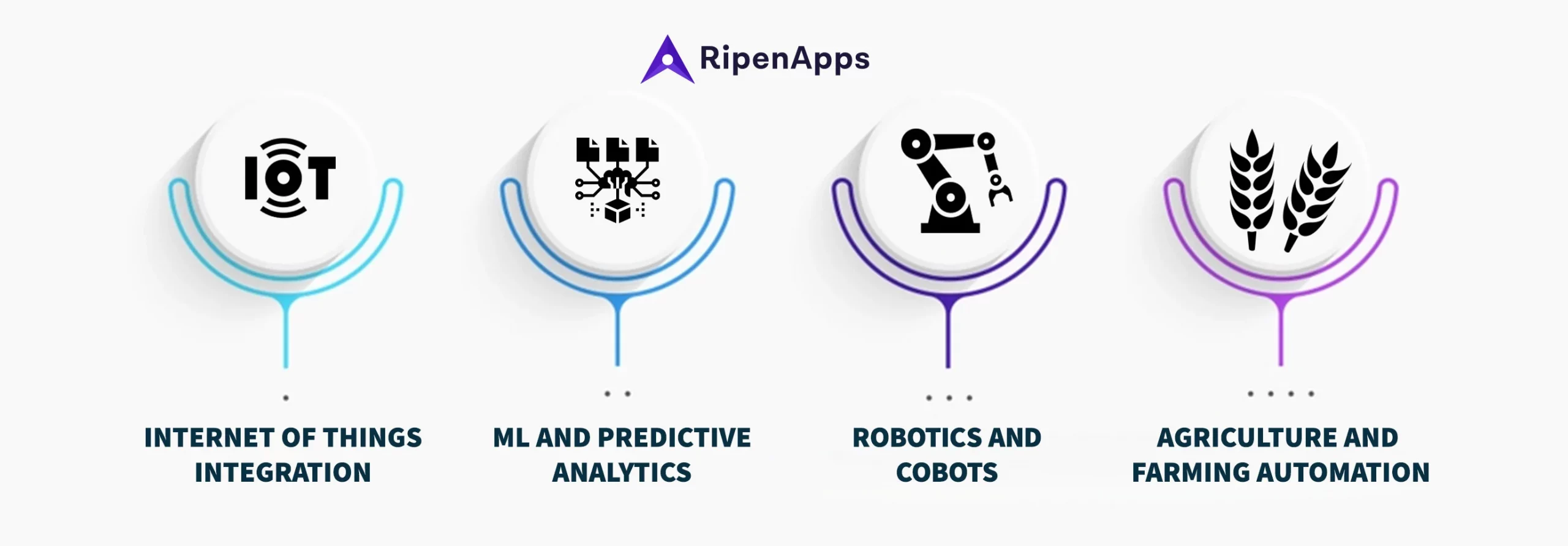
From connecting everyday objects through the IoT to using machine learning and predictive analytics. And there is growing use of robots and cobots, see how these new technologies are changing how we process food for the future.
Internet Of Things (IoT) Integration
Using smart devices like sensors and connected equipment is a big deal in how we process food. These IoT devices collect data from the actions happening in food businesses, which helps you keep an eye on how everything is going. They help in keeping the quality at a good level.
Combining AI in food industry and IoT devices helps in better decisions based on all the data it collects. This does not just make things run smoother, it also lets you use resources better and be more eco-friendly when processing food.
Machine Learning And Predictive Analytics
Using smart computer programs called machine learning in food processing is changing the way you run your business in the industry. These programs carry a lot of information and give you predictive analytics.
Predictive analytics gives you a head up about the quality and suggests you best ways to get where it needs to go. This helps food businesses make smart choices, save money, and work better.
By using machine learning and predictive analytics, the food industry can adapt quickly to what their customers want, make sure they have enough supplies and also keep waste management on track as well.
Robotics And Cobots
Robotics in the food industry is getting on the boom. Have you seen any robot hand creating your drink right in front of your eye? Well, it is getting a very attractive addition.
Robots or cobots work beside humans, as they are just to fulfill their physical demands by them. They are easy to set up and change. That means they can quickly adjust to new tasks as needed.
This not only makes things run smoother but also makes the workplace safer and more comfortable for people. It’s like having the best of both worlds – human know-how combined with the accuracy of machines.
Agriculture And Farming Automation
AI is changing farming for the better, making it more productive, sustainable, and efficient. Smart drones with special sensors can keep an eye on crops, soil, and water use very closely. Advanced computer programs analyze this information to figure out the best times to plant, predict how much you’ll get, and spot any plant problems early on.
Equipment or agriculture app development can be guided by AI in food industry. They can help you in tasks like planting and harvesting accurately and with fewer humans.
Cost-Affecting Factors For Integrating AI In Food Industry
Technology Infrastructure Costs
When bringing AI into the food industry, you need a strong tech setup from the start. This means investing in top-notch equipment like powerful servers and GPUs for fast processing, along with special software. You’ll also need a solid network setup. Deciding between having everything on-site or using cloud services affects costs too; cloud options offer flexibility but might mean ongoing fees based on how much you use them.
Data Collection And Storage
AI in food is in need of good and varied datasets to learn and keep learning. Getting this data costs money, as it involves gathering info from different places, like buying datasets, using sensors, or working with other companies to get data.
Plus, there are costs for handling and storing all this data, which means investing in safe and flexible storage options and tools to make sure the data is in good shape for the AI to use.
Customization And Integration
Customizing AI systems for the food industry means making them fit smoothly into how things already work. This might mean tweaking AI programs to match how food is made, managed, or checked for quality.
The level of difficulty in making these changes affects the costs, including the money spent on developing software, testing systems, and making sure everything works well with other tech already in place. Training users to use the new systems also adds to the cost of customization.
Maintenance And Upgrades
Keeping AI systems running smoothly over time means regularly maintaining, updating, and sometimes upgrading them. This includes checking how well the system is working, fixing any problems that pop up, and making sure it’s secure.
Planning for regular updates is important to keep up with the latest AI advancements. And as needs change, budgeting for new or better equipment is also key to keeping AI systems working well in the long run.
Final Thoughts
AI is making food production more efficient, innovative, and sustainable, from better farming to smoother supply chains and personalized experiences for customers. As the world demands smarter food production, it is important for food businesses to use AI to stay ahead.
However, figuring out how to use AI in the food industry can be tricky. Working with a good AI app development company can really help. They can develop AI tools that fit your business perfectly.
FAQs
Q.1 What is AI in food industry?
AI in the food industry refers to using smart technology like data analysis and machine learning. It’s used in various aspects like making food, improving farming, checking quality, and personalizing nutrition and customer experiences. AI helps make food production more efficient and sustainable by ensuring quality, reducing manual work, and minimizing waste.
In addition, robotics with precise actuators help sort items correctly, while AI algorithms analyze data and images to identify flaws. AI also enables personalized food options by analyzing consumer data to offer products and meal plans tailored to individual preferences and dietary needs.
Q.2 How AI is used in food industry?
Artificial intelligence (AI) and machine learning (ML) offer many advantages for different industries by automating processes, improving efficiency, cutting costs, and reducing human errors.
Automation has brought significant benefits to the food industry, including eateries, restaurants, diners, and food processing companies. AI and ML have sped up supply chain processes and enhanced food delivery app development services, leading to overall improvements in operations.
Q.3 How AI is changing the fast food industry?
AI is making a big impact on the fast-food industry, bringing in new technology to make things faster and more efficient.
One major change is the use of automated order systems. Many fast-food chains are now using AI-powered robots and voice-ordering systems to make ordering quicker and easier for customers.


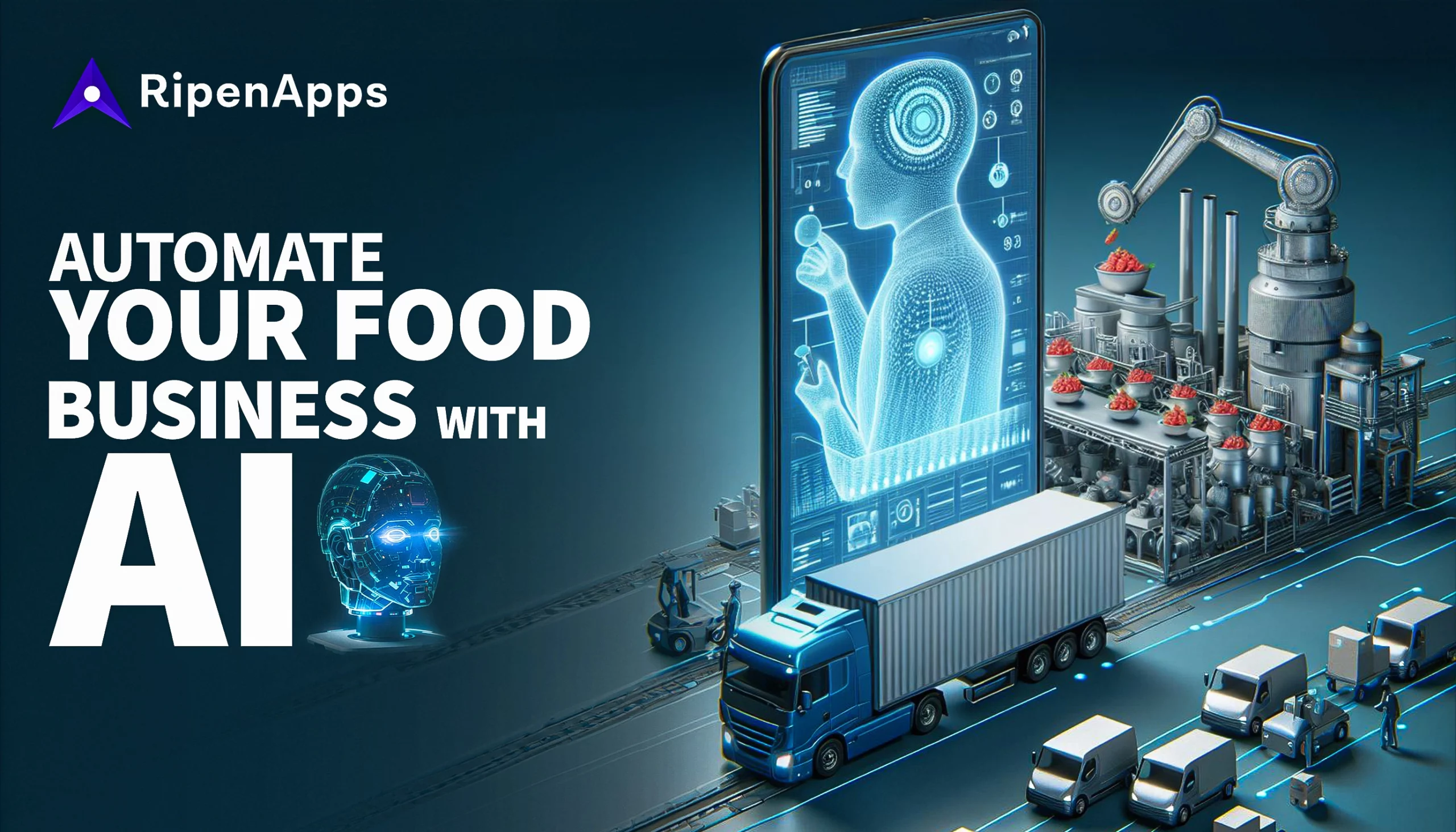





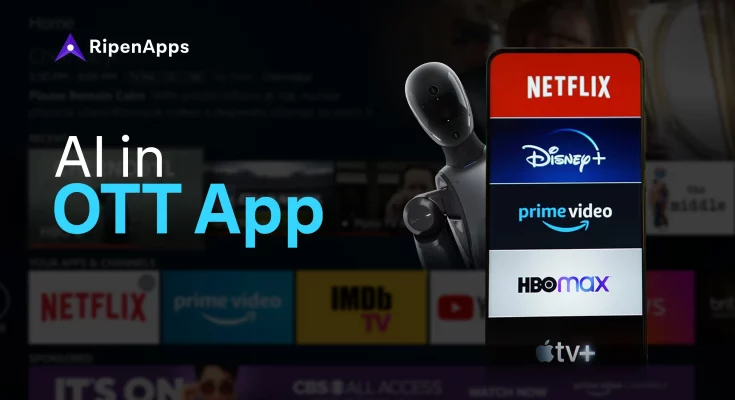
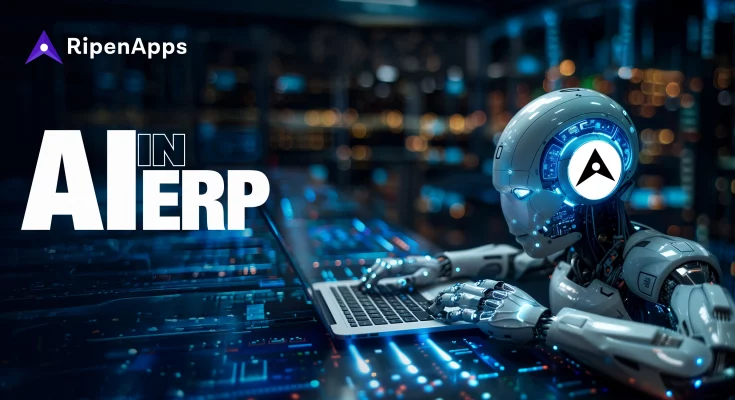
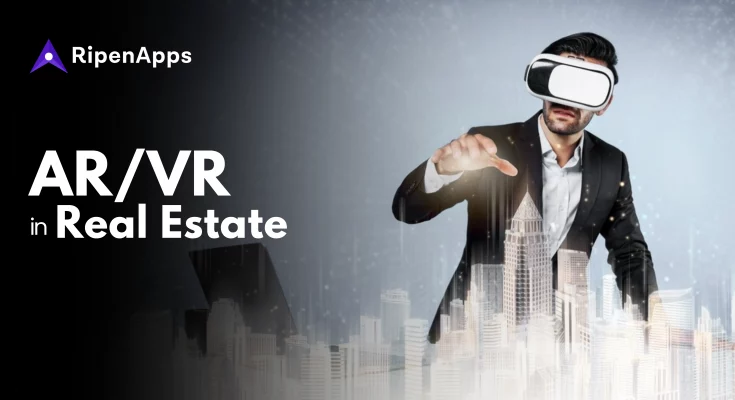

 India
India USA
USA Australia
Australia Canada
Canada UK
UK UAE
UAE
